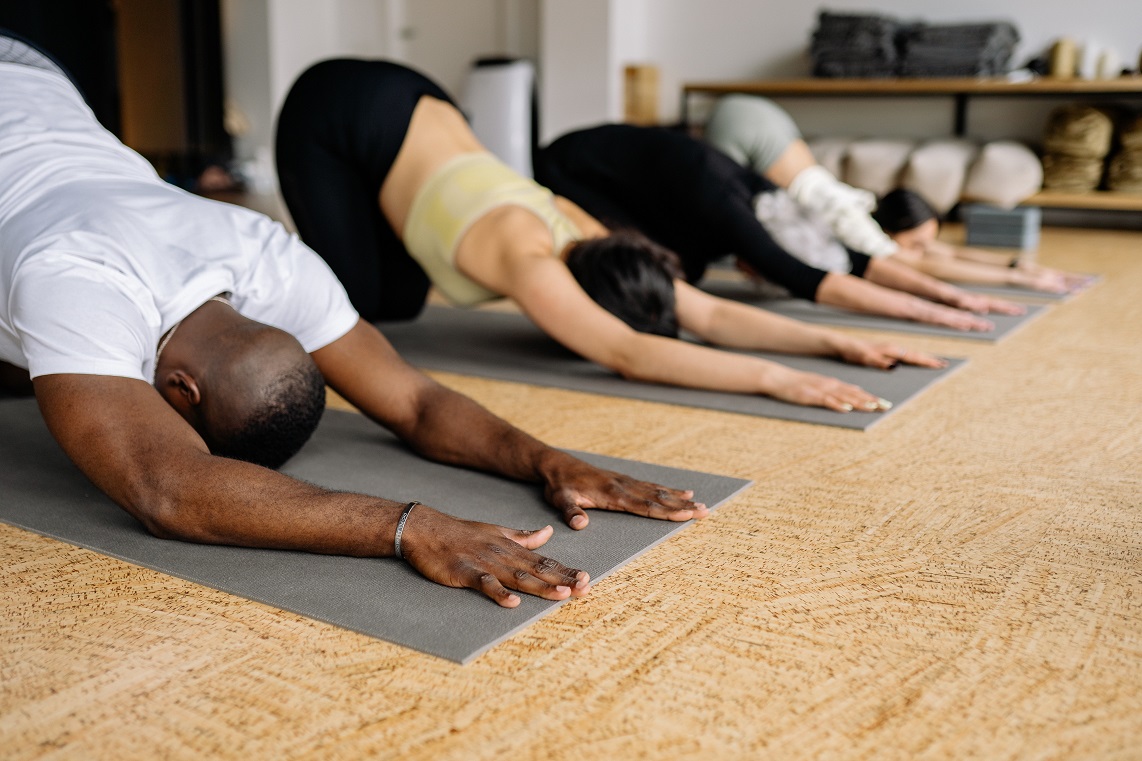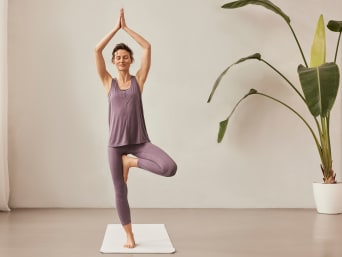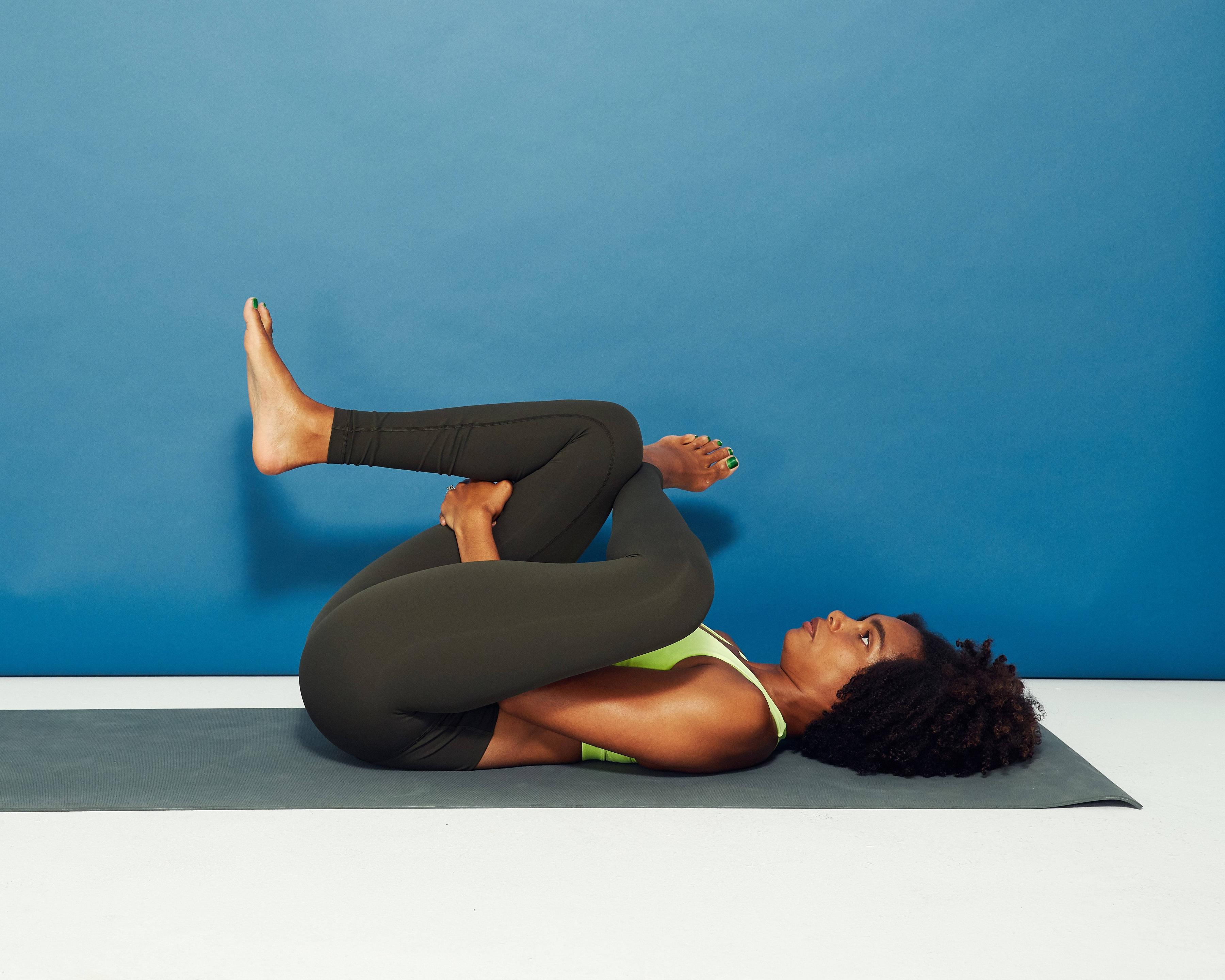
The seated forward pose is great for farting on a yoga mat. The seated forward pose involves bending your knees while bringing your chest up to your knees. Your legs are extended out. In addition to stretching your thighs, you should touch your toes, which will also help you fart. This position is not recommended for those with back problems. You should instead try the bent-over position.
Stand straight up and reach for your ankles. You will be able to reach your crotch. This will force you to press down on your abdomen, making it more likely that you fart. This is an alternative position to the babyfoot pose. By doing this, you can avoid straining the lower back and bloating. You can practice this pose with your partner.

You can fart by pressing your cheeks against your stomach and then releasing. This will prevent the fart from coming out, but it won't help you stop farting completely. You can make your farts quieter by holding your bloated stomach. Also, you might want to move your butt cheeks. This will help to understand your strengths and weaknesses.
Apart from being able to sit in a quiet and comfortable place, yoga poses can be used to help you eliminate excess gas. Many yoga poses help to release gas which is essential for your body to function properly. Some yoga poses are best practiced alone or in a quiet setting. If you are in a yoga lesson, it is easier to relax and concentrate on the posture. This will allow you to take deep breaths and let go of any gas trapped in your abdomen.
Your butt can be lifted to the best position for farting. While this may be more comfortable than other positions, it's not always the best position. The toilet ottoman allows you to change your sitting position. If you're in a public place, you can move from the side of your chair to the right side and hold your butt in a slightly more natural position.

During your sleep, it's easy to forget that your stomach needs a place to pass gas. Gravity will push the gas through the colon by placing you asleep on your left. While you're sitting on your left side, try to keep your knees bent, as it will allow you to fart more easily. This position is best for those who need to frequent the toilet.
FAQ
How many times a week should I exercise?
It all depends upon how much time you have and what type or exercise you prefer. It's a good idea to do moderate-intensity aerobic exercises 3 - 5 times per week. It's important that you don't overdo it. Consistent exercise is essential to achieving maximum benefit from your workouts.
Which exercises work best for you?
It really depends on what kind of fitness goals you have. Some people choose to focus on endurance activities, such as swimming, cycling, and running. Others love lifting weights or using resistance bars. There are many options for exercise today. Pick the option that fits your needs.
Do I need to exercise every day?
No! You should do at least 30 mins of moderate-intensity activity 5 days per week. This could be walking fast enough so you feel slightly out breath or cycling hard enough to sweat.
Do I have to exercise while drinking alcohol?
Yes. Alcohol can increase energy expenditure and speed up recovery, as well as reduce soreness.
Also, alcohol increases insulin sensitivity which makes it easier to absorb glucose.
Dehydration can result from alcohol, which can affect your metabolism. It also reduces testosterone production, which may decrease muscle-building potential.
For these reasons, women shouldn't drink alcoholic beverages before working out. Women who drink heavily should wait at least 24 hours between drinking and working out.
Nursing mothers should abstain from alcohol as much as they can.
Men should only consume one drink per day.
Statistics
- According to the American Heart Association, blood pressure should be checked at least once every two years, beginning at age 20. (my.clevelandclinic.org)
- The PRS enabled risk stratification for overall prostate cancer and lethal disease with a four-fold difference between men in the highest and lowest quartiles (HR, 4.32; 95% confidence interval [CI], 3.16-5.89). (pubmed.ncbi.nlm.nih.gov)
- 10 pounds in a month is likely during a lean bulking phase, especially for beginners. (muscleandstrength.com)
- An estimated calorie range for moderately active adult males falls between 2,200 to 2,800 calories per day, depending on age. (eatright.org)
- Get free shipping and 25% off today. (healthline.com)
External Links
How To
How can I exercise to burn fat?
Exercise burns calories through increased metabolism and oxygen consumption.
If you exercise with moderate intensity, you can safely lose weight.
These tips can help you to burn fat while training:
-
Cardio exercises can include running, walking, swimming or cycling.
-
Exercise for 30 minutes three times per week.
-
You can lose weight by adding strength training to the routine.
-
Avoid doing intense exercises. It is possible to build muscle without destroying muscle tissue.
-
During exercise, drink plenty of water. Water helps flush out toxins and keep your body properly hydrated.
-
After exercising, consume low-fat protein smoothies. Protein shakes boost energy and repair muscle tissue.
-
Eat smaller meals throughout the day, so you don't feel hungry between meals.
-
Don't skip breakfast! Skipping breakfast can leave you feeling tired and sluggish.
-
Take care of your mind. Stressful situations can slow metabolism.
-
Keep a positive attitude. Studies show that people who believe they're overweight gain more weight than those who think they look pleasing.
-
Get enough rest. Insufficient sleep can make it more difficult to lose weight.
-
Always be active. Keep moving every hour.
-
Maintain a healthy diet. Healthy eating will keep you fuller and more satisfied for longer.
-
Relaxation is possible by finding ways to relax. Your body won't release stress hormones that cause muscle tissue destruction if you have a tense mind.
A balanced diet includes all essential nutrients needed for growth and development.
Instead of eating three large meals a day, eat six smaller meals every day. This gives your body more time to digest the food you eat.
You need about 500 milligrams of calcium daily to maintain strong bones. Calcium is found in dairy products like yogurt, fortified milk beverages, orange juices, cereals and bread.
Calcium comes from leafy green vegetables, beans, tofu, nuts, seeds, and cheese.
Vitamin D is necessary for the body to absorb calcium. Vitamin D is found in eggs yolk, fatty fish and fortified foods.
Vitamin E is crucial for skin health. Vitamin E is found in vegetable oils and wheat germ oil, as well as peanuts, almonds and sunflower seeds.
Zinc is essential for healthy immunity and wound healing. Zinc can be found in seafood, legumes and meats.
Zinc deficiency could cause fatigue, nausea, vomiting, and depression.
Insulin resistance is caused by eating too much sugar, which can increase blood glucose levels. Insulin resistance is linked to weight gain.
Insulin resistance develops when there are high levels of free radicals in the bloodstream. Free radicals are molecules with unpaired electrons that damage cell membranes and other parts of the body.
The most common sources of free radicals include food additives.
Free radicals can lead to cancer and heart disease, diabetes mellitus, arthritis, asthma, and premature aging.
Eating a well-balanced diet with antioxidants is the best way to prevent free radical damage. Antioxidants protect against oxidative damage.
Vitamin C is found in citrus fruits and beta carotene is found in carrots.
Selenium, manganese (and zinc) are other antioxidant nutrients.
Selenium protects cells from free radical damage. Selenium may be found in Brazil nuts as well tuna, liver and kidneys. It can also be found on shrimp, cod, turkey, beef lamb, pork, chicken, and other foods.
Copper protects the eyes, brain, lungs, liver, and red blood cells. Copper can be found in meat, shellfish, meat, and organ meats.
Manganese forms an essential part of bone structure. Manganese may be found in brown rice or spinach, bananas and prunes as well raisins, oatmeal and lentils.
Zinc is important for healthy growth, reproduction, and wound-healing. Zn can also be found in white fish, lean cuts of meat, poultry, and eggs.